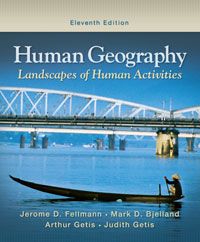1.
A) raw materials production B) goods production C) material processing D) "A" and "B" E) "B" and "C" 2.
A) True B) False 3.
A) supply B) demand C) location D) "A" and "B" E) "B" and "C" 4.
A) True B) False 5.
A) input B) output 6.
A) Florida orange juice concentration and freezing B) California fruit and vegetable canning C) Minnesota iron ore beneficiation D) all of these 7.
A) labor B) raw material C) market D) power E) transportation 8.
A) labor B) raw materials C) market D) power E) transportation 9.
A) labor B) raw material C) market D) power E) transportation 10.
A) air freight B) motor trucks C) railroads D) water 11.
A) least-cost theory B) locational interdependence theory C) profit-maximization approaches D) Von Thunen's theory 12.
A) True B) False 13.
A) labor B) transportation C) market D) raw material E) power 14.
A) deglomeration B) agglomeration C) comparative advantage D) Just-in-time (JIT) manufacturing E) Flexible production systems 15.
A) True B) False 16.
A) differential regional labor costs B) newly-available world markets C) improved global communication D) cheaper forms of transportation worldwide 17.
A) Eastern Anglo America B) Western and Central Europe C) Eastern Europe D) East Asia 18.
A) Mexico B) Brazil C) China D) all of these E) none of these 19.
A) True B) False 20.
A) primary B) secondary C) tertiary D) quaternary E) quinary 21.
A) Japan B) European Union C) Canada D) United States 22.
A) primary B) secondary C) tertiary D) quaternary E) quinary 23.
A) primary B) secondary C) tertiary D) quaternary E) quinary 24.
A) blue collar B) pink collar C) white collar D) gold collar 25.
A) Zurich, Switzerland B) Princeton, New Jersey C) Palo Alto, California D) Boston, Massachusetts 26.
A) market; perishability B) market; weight gain C) raw material; perishability D) raw material; bulkiness 27.
A) identifies the one location where profit is maximized. B) locates the point where the firm breaks even. C) is a dot map of the most profitable firms in the region. D) marks the region of satisfying locations for the firm. 28.
A) agglomeration B) deglomeration C) the multiplier effect D) outsourcing 29.
A) created a new international division of labor (NIDL). B) increased the subdivision of manufacturing. C) increased the opportunities for offshoring. D) has led to all of the above. E) has led to none of the above. 30.
A) the Ganges Valley. B) Transvaal. C) Sydney. D) Southeast Brazil.





